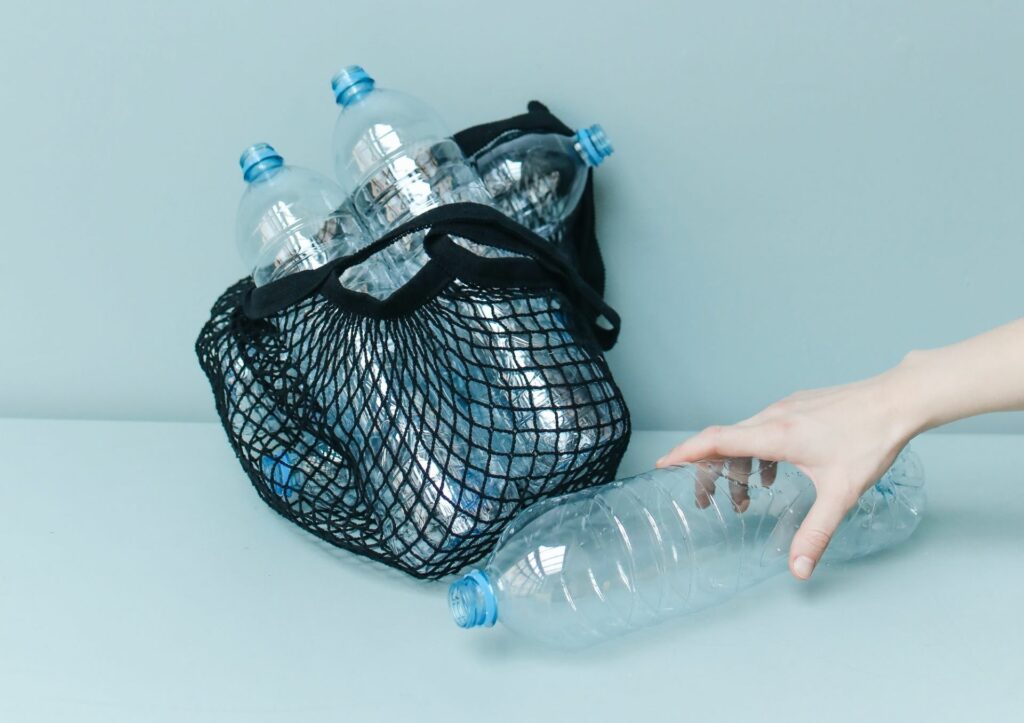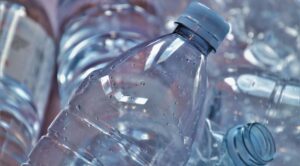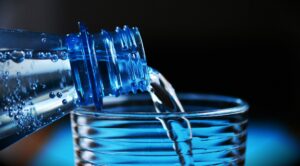Although plastic bottles are ubiquitous and the most commonly used container for liquids, they are a relatively recent invention. The first synthetic plastic wasn’t manufactured until the early 20th century, and only after World War 2 did PET plastic bottles start production.
How did plastic manage to displace glass in less than a half-century? What’s the story behind PET bottles? Do plastic bottles have a future? In this article, we’ll delve into the fascinating history of water bottles.
How Were the First Plastic Bottles Designed?
Although plastic was produced in one way or another since 1862, the numerous practical uses of plastic today wouldn’t have been possible without a little-known Belgian chemist. Leo Baekeland invented a substance called Bakelite in 1907. It was the first synthetic plastic that could be molded into various shapes after heating. The versatility and moldability of the substance made plastic a key component of many industries. However, due to the limitations and coarseness of the process, functional water bottles couldn’t be made out of plastic.
In the 1940s, a new type of plastic called polyethylene terephthalate (PET) was developed, which had many of the properties that were desired in a bottle material. PET is a type of polyester that is formed by combining two monomers, ethylene glycol, and terephthalic acid. It is lightweight, strong, and can be molded into different shapes. It is also waterproof and resistant to chemicals, making it suitable for use as a container for liquids.
In the 70s, Nathaniel Wyeth successfully invented a scalable way to mold PET into bottles, which revolutionized the beverage industry, as they were cheaper and more durable, and they could be produced in a wide range of shapes and sizes. Although the manufacturing processes have changed a lot, PET remains the most commonly used plastic for water bottles.
Today, PET is far from the only plastic used to create water containers. Polycarbonate and High-density polyethylene (HDPE) are two other highly popular types of plastic that see regular use.
Why Did Plastic Bottles Take Over and Replaced Glass Bottles?
Plastic replacing glass as the primary beverage container wasn’t a historical fluke. Plastic offered a number of important advantages that gave companies that used it for packaging a huge competitive advantage, which forced industry-wide adoption in a few short years. Below are just some of the advantages plastic had over glass at that time.
- Lower production costs: Plastic bottles are cheaper to produce. They require less energy and resources to manufacture and transport, making them more cost-effective in a number of important ways.
- Lightweight and shatter-resistant: Plastic bottles are lightweight and shatter-resistant, which makes them a safer and more convenient option for transportation and storage. Although there are shatter-resistant glasses, they’re far more expensive than plastic and aren’t cost-effective for use as beverage containers.
- Improved manufacturing technology: plastic is more flexible and moldable than glass. This helps brands manufacture fit-for-purpose and unique containers that not only make the process more efficient but also help products stand out.
- Environmental concerns: While this might have changed in recent years, plastic bottles were initially touted as a more environmentally friendly option, as they were lighter and required less energy to produce and transport.

What Does the Future Hold for Plastic Bottles?
In recent years, to deal with regulations and concerns, industries have found new and innovative ways of using plastic, namely by recycling it. These processes enable more efficient use of plastic, reduce costs, and ensure plastic continues to be relevant in most major industries for decades to come. More than a million plastic bottles get recycled each day in the United States alone, and in this section, we’ll explore the new and exciting world of plastic recycling.
Plastic Recycling
Since the use of plastic is so integrated into our lives, completely replacing it is incredibly difficult, if not impossible. That’s why scientists have tried to find ways to make our use of plastic more environmentally friendly, and they’ve come up with a few innovations that, while still in their infancy, could decide the future of plastic.
- Chemical recycling: There are projects in the works to design specialized recycling facilities able to break down plastic into its constituent parts, allowing it to be used to make new plastic products. Chemical recycling can process a wider variety of plastics than traditional mechanical recycling, which is limited to plastics of the same type. This means that chemical recycling could potentially handle a greater percentage of plastic waste. A reusable bottle will tax the environment much less than single-use plastic bottles.
- Environmentally friendly plastic: If the problem is that plastic doesn’t degrade naturally, why not change that? Scientists have asked the same question, and that’s how biodegradable plastic was invented. Biodegradable plastics break down more quickly than traditional plastics, reducing the amount of time they spend in landfills or the environment.
History of Plastic Bottles FAQ
When Did We Start Using Plastic Water Bottles?
Although plastic bottles are virtually everywhere these days, their adoption is relatively recent. The very first water bottles were designed in the 40s, and it took more than a decade until bottled water was manufactured at scale. The earliest types of synthetic plastic weren’t suitable for water since they weren’t waterproof nor could they preserve the quality of the water. Only after the invention of PET plastic did large-scale manufacturing of bottles for water start.
Why Did We Switch from Glass to Plastic Bottles?
Although you were far more likely to see water in a glass bottle in the first half of the 20th century, that quickly and dramatically changed in the second half as virtually all water suppliers switched to plastic containers, and this is primarily because plastic is much cheaper and far more versatile than glass. Plastic can be molded much more easily and cheaply, and in an industry with very low-profit margins, this made a huge difference.
Where Were Plastic Water Bottles Invented?
Although the first synthetic plastic was developed at the start of the 20th century, it wasn’t for use as a water container. It was only when polyethylene (PE) was developed in England in 1935 that plastic packaging was more widely adopted.
Two inventors in the United States, Enoch Ferngren and William Kopitke, successfully created the first plastic water bottles by mimicking the process of glass blow molding. They invented the first machine able to mold plastic into bottles.





